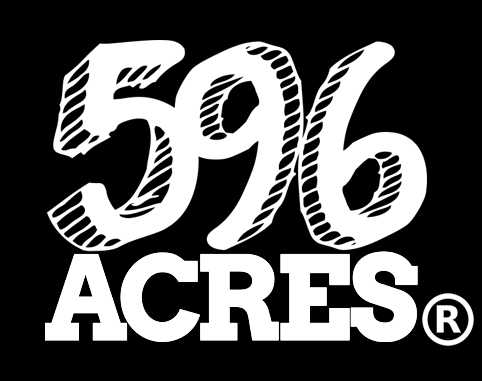Guest post by Gabriel Park, edited by Shannon Pepper
A Typical Java Street Community Garden meeting
Five steering committee members, plus three or four other members, show up at a bar near the garden. Some get drinks. If it’s summertime, the group will meet in the garden, but for other times of year, having an indoor space with light is nice. It’s not the bar closest to the garden, it’s just the closest bar that’s big enough for 10 people that doesn’t complain too much about bringing kids. Everyone has the agenda, on paper or on their phones or computers; this list of topics was circulated via a garden newsletter about a week before and posted in the garden.
The group discusses things in the order they are listed. Any issues that need to be voted on are discussed, and they try to come up with plans for the next workday. They try to capture in the agenda notes section: who is responsible for what and by when. Every responsibility gets two people assigned to it: one person takes the lead and the other person does the follow up. The meetings usually last about 90 minutes.
Java Street Garden member Gabriel Park says, from his perspective, there are 3 major components you need to “decentralize your organization:” good structure for the group, someone to be the secretary at all times, and clear communication.
Structure: Fool proof or Proof we’re fools?
The first piece of the effective structure at the Java Street Garden is the Steering Committee. The garden has about 30 members. When new members fill out the form to join, it asks them if they want to be on the Steering Committee. Everyone who answers YES gets to be on it.
The garden currently has between 10-14 people on the Steering Committee, who are subdivided into 5 main responsibility areas: Membership, Garden Design, Fundraising, Partnerships, and Secretary/Treasurer. Having at least 2 volunteers in each area keeps people honest and helps prevent personal relationships from interfering with garden business. For example, if a Steering Committee Member who volunteers on Membership has a personal conflict with a Member, someone else is their backup so the Membership volunteer can opt out of the conversation if needed.
Gabriel says, “the easier you can make it to remember the meetings and the work days, the better.” Skip the calendar. Set things up so that they are easy to remember. The Java Street gardeners set all of their meetings to the first Thursday of the month at 7:30pm and all of our workdays to the third Saturday of the month at 10am. This setup gives them time to meet, plan the workday and get necessary supplies lined up *before* the workday. And all announcements and reminders can say the same thing: “Don’t forget the meeting on the first Thursday of next month at 7:30pm!”
The Secretary Rules
It’s key to have someone organizing the agenda and holding a group to their time limits and voting rules. The Secretary at Java Street Garden uses an Agenda/Minutes tool that the gardeners designed. Anyone can add to the agenda online prior to the meeting. The Secretary updates the document with notes at the meeting, which become minutes. As long as the roles in the document are assigned/agreed upon, the Secretary doesn’t have to do all the work. For Java Street, says Gabriel, having the Secretary as the point person has been the key to making this tool useful.
They don’t have to be fancy or bound or even written down all that neatly–but you need rules on how decisions can be made. In the Java Street garden, the rule is any member can propose a vote by putting it on the agenda at the monthly meeting, if a quorum is present at the meeting. A quorum is how many people you need to have to make a binding decision. Having a clear quorum requirement prevents a few people from making decisions that impact everyone without input. The Java Street gardeners decided to define their quorum as half of the number currently serving on the Steering Committee. This means that if there are 13 people on the Steering Committee, a quorum would be 7 people, but those 7 people present at the meeting could be any active members. The vote is communicated to the Secretary who can help frame it clearly as Yes/ No and facilitate some time before the vote to present different views. Then the vote is taken by a show of hands and the majority wins at the meeting. The Secretary records the outcome in the minutes.
Java Street has used this process to decide which projects to pursue at the workdays (if they are debatable), as well as when to revoke someone’s membership. It’s not perfect–something they agreed to in May could be proposed again and voted down in June. “However,” says Gabriel, “It’s been great for us in some respects: for example, each November we vote on whether to convert all of our raised beds to community beds or leave 50% of them as ‘private’ beds which are assigned to member volunteers through the lottery process at the February meeting. Even though we may continue to propose and affirm the same practice each year, doing so affirms our majority commitment to the norms we have in place and allows room for change.”
Communication
Everyone loves to talk about communication, but actually communicating is hard in a decentralized organization. It’s not because people aren’t talking; it’s that people don’t know who to listen to. Everyone has a different idea about what would look nice planted by the front gate, and what’s a weed, and what the license says. “Some tears are unavoidable every year: if you don’t put rocks around it and label what you plant, you are going to cry when someone builds a box on top of it. No amount of shared files or bullhorns will prevent that–you just have to work tissues into the budget.” There are, however, some tools you can use to ease the pain.
Use Google Drive or some other easy file sharing for keeping track of documents that anyone who needs to can get access to. Anyone who emails JavaStGarden@gmail.com who wants to join, gets a standard reply from the Membership team that says: “Hi! If you want to join, read this 6 page agreement (PDF). If you agree, use a Google form like this (PDF) to sign up.” Once someone signs up, they receive a Monitoring Hours Sign Up form. When people show up for their shift, they sign next to their name verifying their attendance. The aim is built in accountability through self-reporting!

Having a handwritten project list like this on a clipboard in the garden helps keep a consistent thread of communication going about which garden projects need attention. Keep everyone updated on the happenings with a follow-up like this.
A Newsletter can serve as a hub for all the group document links. Each Steering Committee member can focus on doing their work and someone can make it their business to find out what’s going on and put it in a newsletter. The Java Street garden releases its newsletter on the 15th of each month, and includes links to the Minutes/ Agenda, Monitoring Hours Sign Up Form and Project List / Updates.
Final Thoughts
Accept some pain: Decentralizing will likely mean your garden is not as artistically streamlined as you really want. It will likely mean that it takes weeks of campaigning and infighting to make relatively simple decisions. It could mean some food rots on the vine because no one knew they were supposed to eat it. That sucks. But your disappointments will be shared by your community in a way that centralized gardens usually aren’t. And when hard fought battles are through, you will have better parties. I recently heard Sir David Attenborough on record saying that primates are the best communicators of all living organisms. (Of course we would think so!)
I am not sure I agree, but clearly, we throw the best parties.
Gabriel Park has been part of the Java Street Community Garden since the group formed in 2012. He lives in Greenpoint with his wife, two daughters and two cats.
596 Acres has organizing support material in the form of Community Governance Cards, which provide guidance and activities to facilitate healthy group dynamics. You can purchase them for $10 through the 596 Acres Store.







